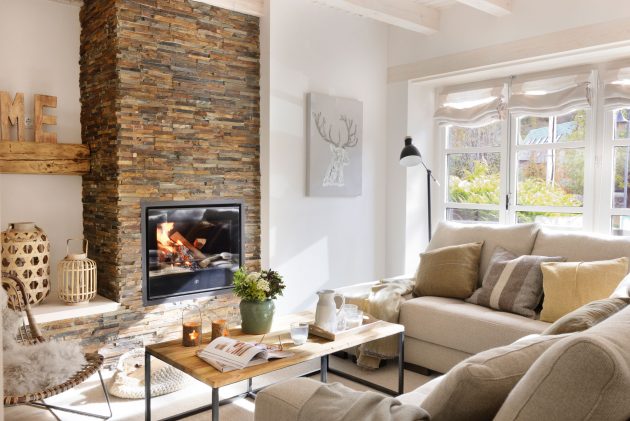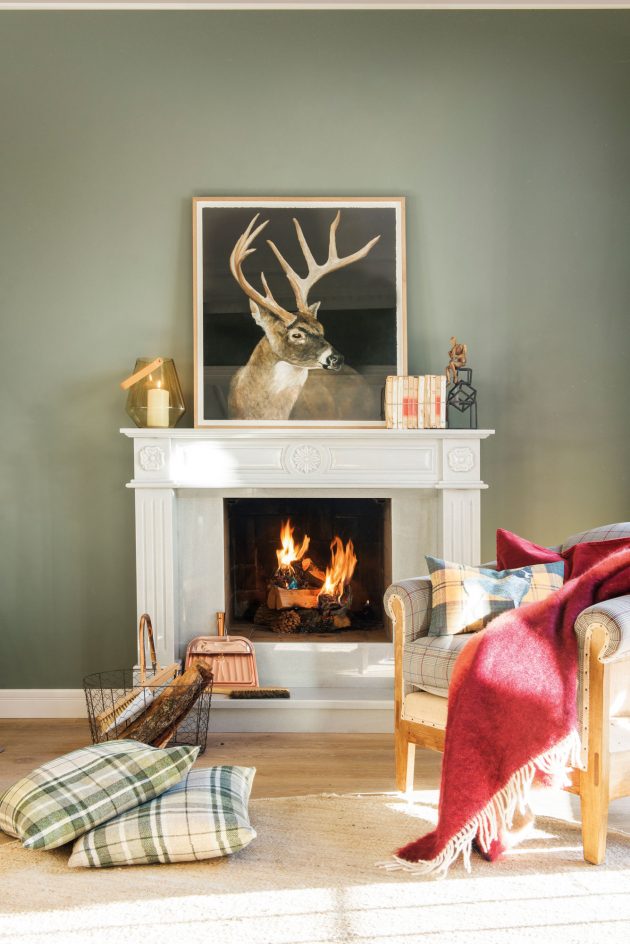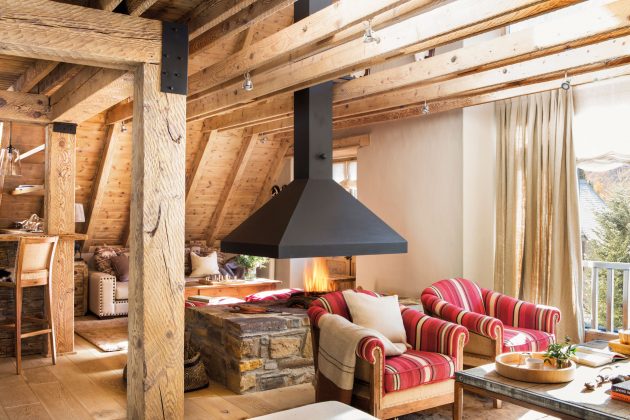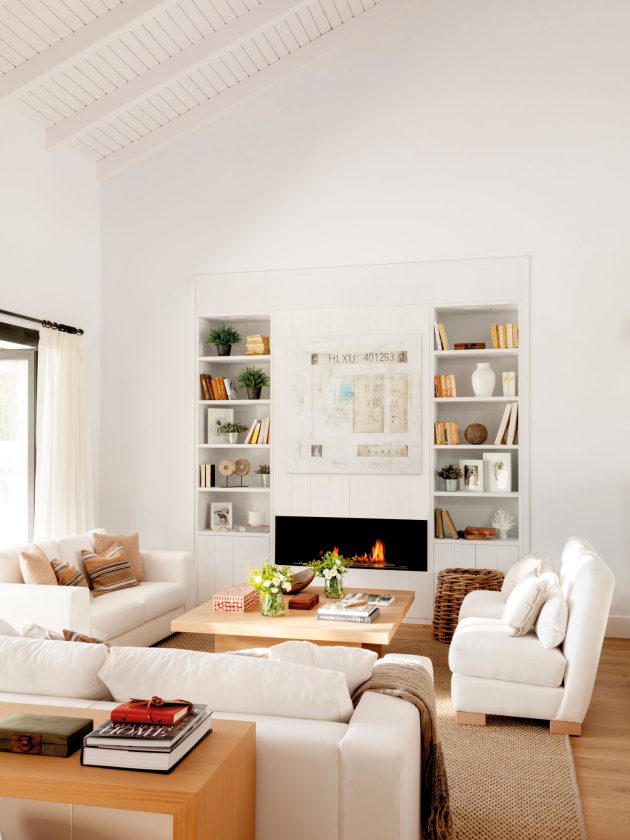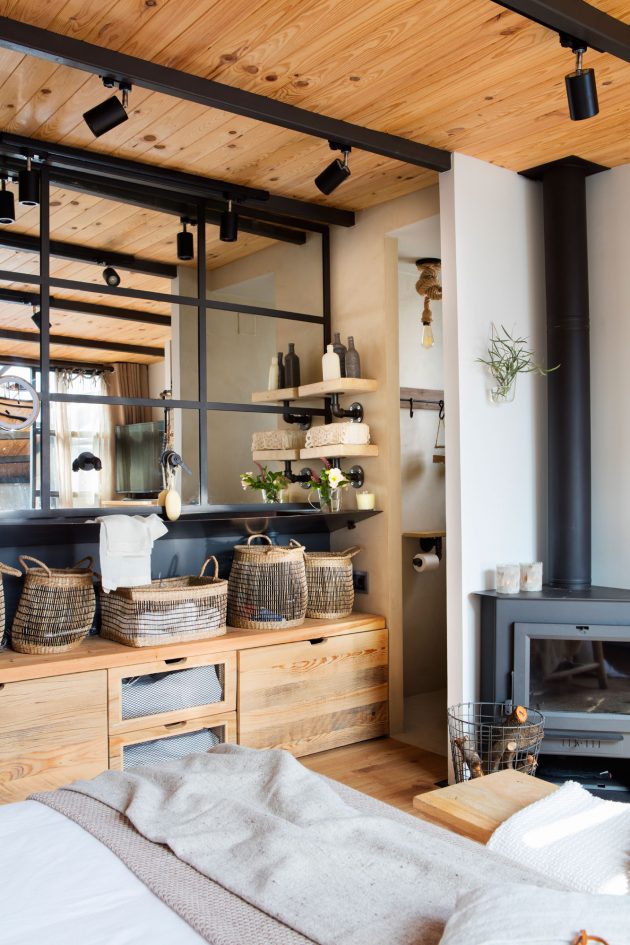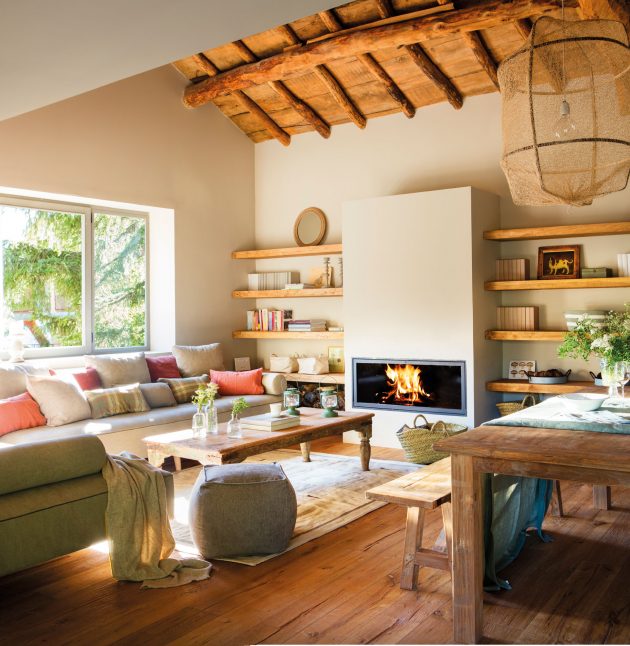You have them made of firewood, gas, pellets, and even bioethanol. Fireplaces are perfect for creating ‘home warmth’ and they cost less than you might think! We solve all your doubts:
1. THAT IS ACCORDING TO THE SIZE OF YOUR HOUSE
The fireplace must be the size and power that each space really needs, depending on the m2, insulation, number of windows, etc.
2. WELL INSTALLED
Pay attention to the quality of the installation and, especially, to the extraction of smoke, especially in traditional firewood models.
Firewood is a very economical fuel and its beauty is unmatched. However, its installation is the most expensive and depends largely on the structure of the building.
4. IF YOU LIVE IN AN APARTMENT: GAS FIREPLACE
Connected to the gas supply, chimneys of this type do not require storing fuel and allow to regulate the size of flames. A watertight model does not require a smoke outlet through the cover; just place it on the facade and it is smaller.
5. THE MOST ECOLOGICAL OPTION: PELLETS
They combine the virtues of wood-burning fireplaces with much higher efficiency and no CO2 emissions, making them a sustainable option. Pellets are an ecological fuel: small pressed cylinders, made from residual wood, sawdust and shavings.
6. IF YOU DON’T WANT FUMES: BIOETHANOL
As they do not produce fumes – only a minimum of carbon dioxide – they do not need any type of conduit to the outside. Bioethanol fireplaces do not offer residual heat, as their burner cools down as quickly as it heats up.
CAN I PUT A FIREPLACE?
If your building does not have the necessary installation for this, it will not be possible to place a wood fireplace that requires a smoke outlet.
You can do this if you live on the top floor of a residential building and as long as there is an air chamber between the floor and the roof. And, of course, if you live in a separate house.
The good news is that there are models of fireplaces that do not require a smoke outlet, such as clean-burning bio-fireplaces or gas fireplaces with a sealed chamber.
WHAT PERMITS ARE NEEDED?
Placing a wood fireplace requires a minor building license from your city council, in addition to the consent of the community of owners.
To process the building license, you must present the project of the reform to be carried out – which must comply with what is dictated by the Regulation of Thermal Installations in Buildings (RITE) -, together with the budget for the same, since the license usually cost between 4 and 5% of it.
If you must make a smoke outlet on the roof, the building license will be subject to the consent of the community of owners (specifically, by 3/5 of them), which you must present in writing and signed.
ARE THEY A GOOD OPTION?
Nothing brings more feeling of warmth than a good fire although, in terms of efficiency, the fireplaces do not come out so well.
In a traditional open model, up to 70% of the heat produced escapes through the chimney along with the fumes and combustion gases.
The efficiency of a fireplace can be increased by up to 60% if a closed model is chosen, with a glass door, since it reaches a higher temperature.
DO YOU WANT TO IMPROVE YOUR PERFORMANCE?
Although they are usually a support element of other heating systems, there are proposals with higher benefits to consider.
The models with dual-chamber advantage fume the first combustion and improve efficiency by up to 85% in wood stoves and 90% in the pellet.
Also, some fireplace inserts incorporate fans that distribute heat better and faster. There are also those that can push the hot air to other rooms.
In any case, think that the fireplace should be the size and power that each space really needs, depending on the m 2, insulation, number of windows, etc. As a general rule, 1KW of power is needed for every 10 m 2, approximately, for rooms with conventional ceiling height.
WHICH ARE THE CLEANEST?
Contemplating the flames is very relaxing, although we do not remember it when it comes to cleaning the remains. But not all chimneys generate the same amount of waste.
Both wood and pellet fireplaces offer the most ‘classic’ fire, although the former generates more ashes than the latter, with fairly clean combustion and much less waste.
If you choose a gas or bioethanol model, although you will not be able to enjoy the crackling of the fire or its characteristic smell, you will not have to clean ashes or soot either, because neither of these systems generates them.
Regarding maintenance, for all systems, except those of bioethanol, an annual review is advisable.

